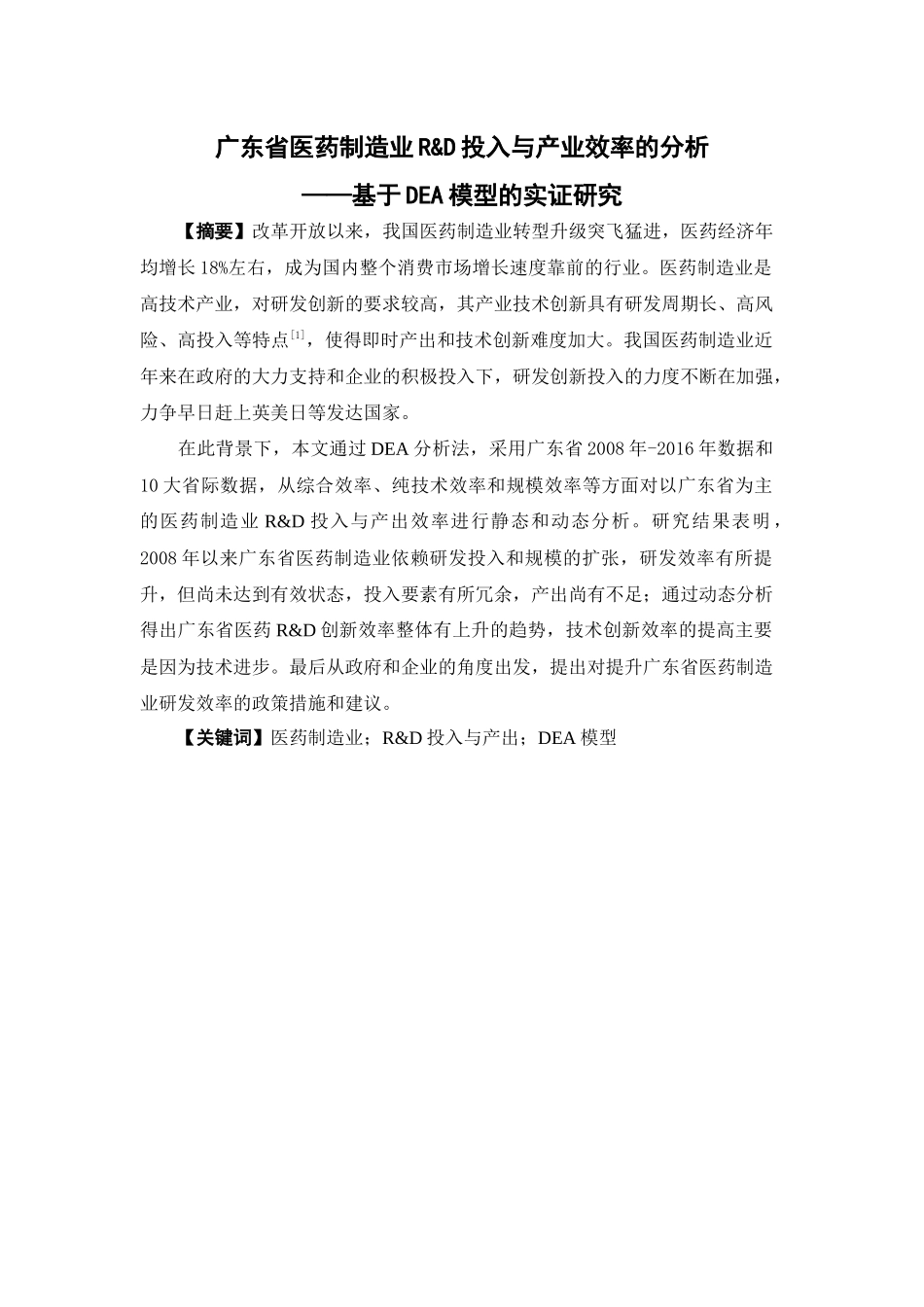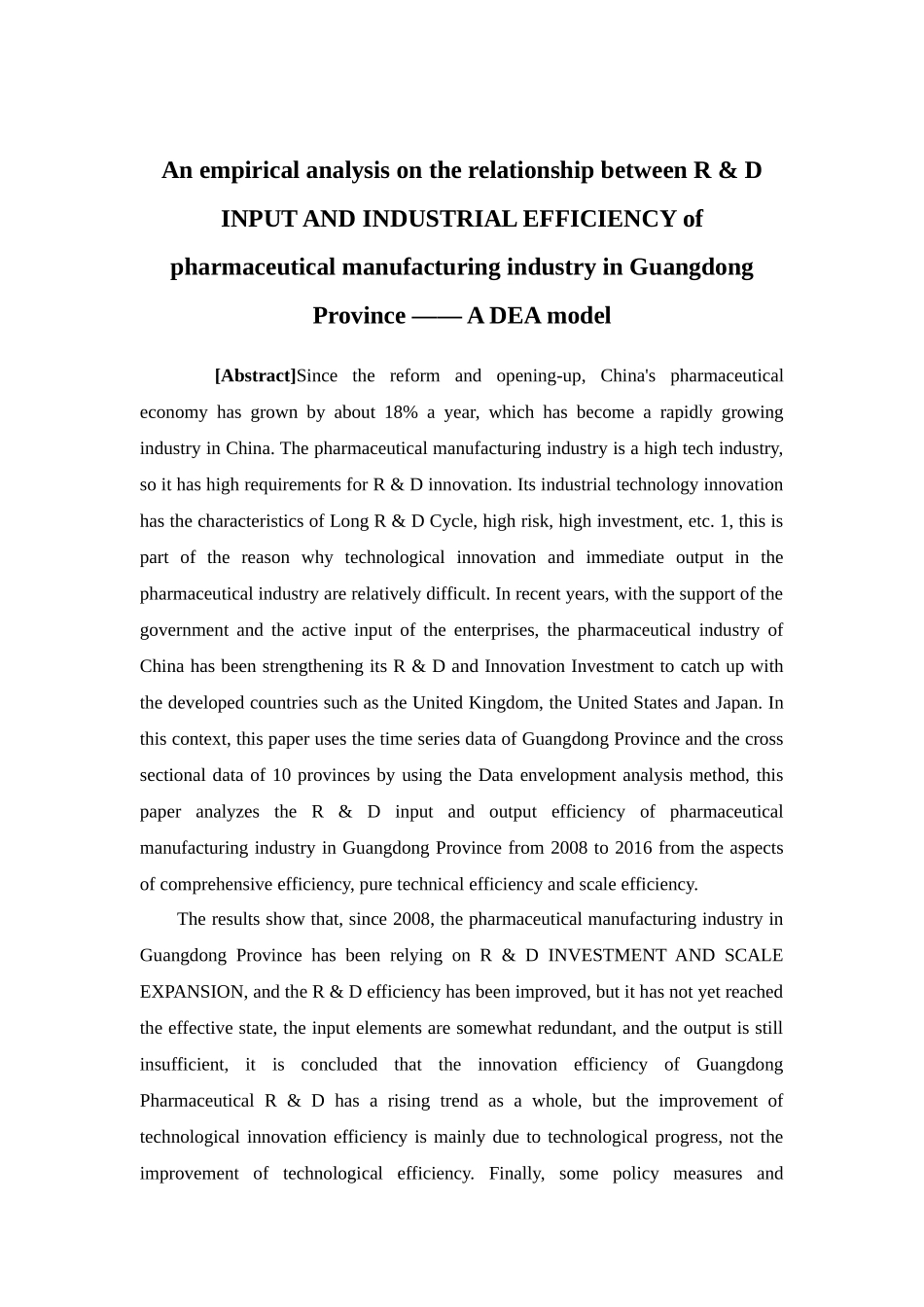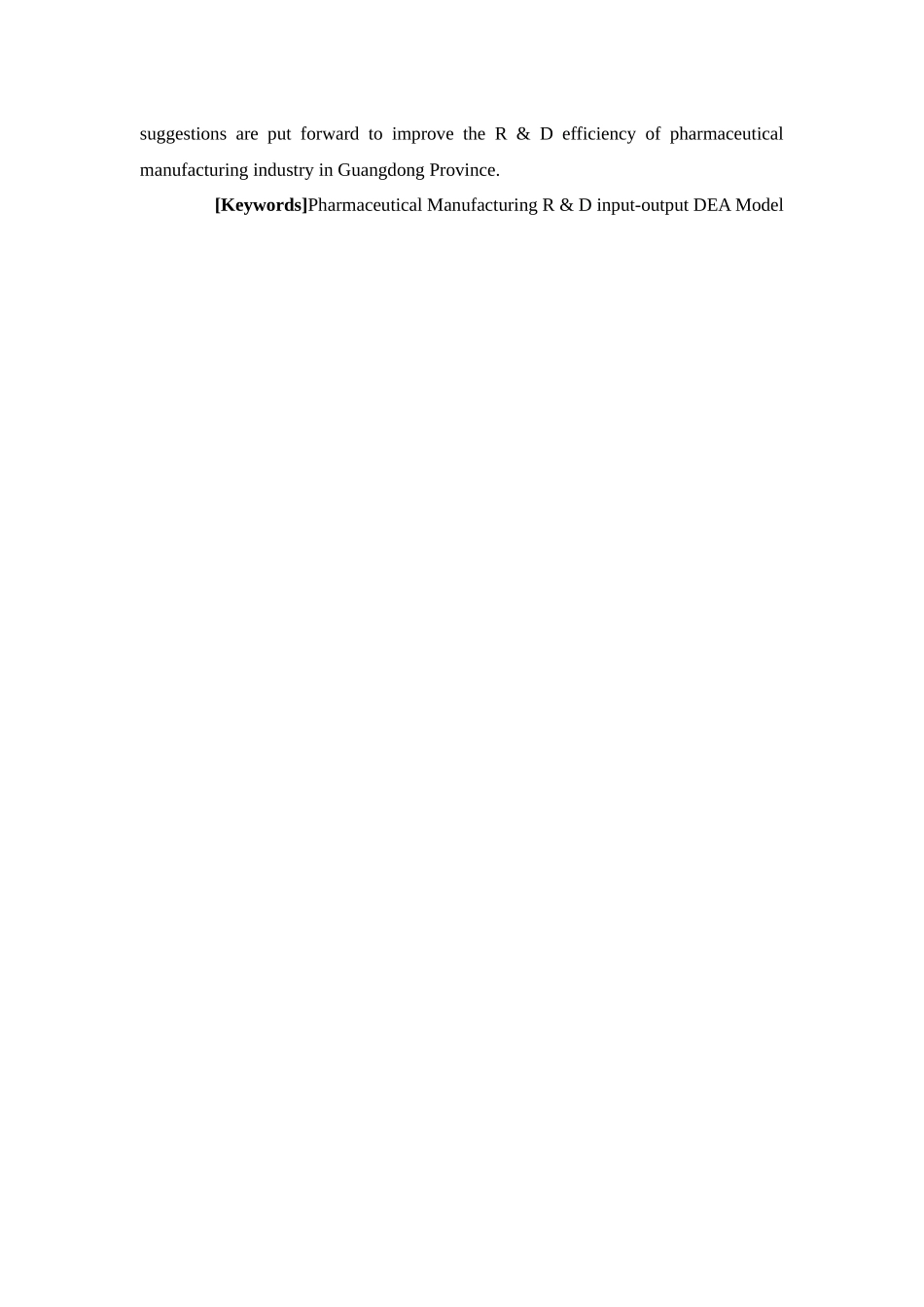广东省医药制造业 R&D 投入与产业效率的分析——基于 DEA 模型的实证研究【摘要】改革开放以来,我国医药制造业转型升级突飞猛进,医药经济年均增长 18%左右,成为国内整个消费市场增长速度靠前的行业。医药制造业是高技术产业,对研发创新的要求较高,其产业技术创新具有研发周期长、高风险、高投入等特点[1],使得即时产出和技术创新难度加大。我国医药制造业近年来在政府的大力支持和企业的积极投入下,研发创新投入的力度不断在加强,力争早日赶上英美日等发达国家。 在此背景下,本文通过 DEA 分析法,采用广东省 2008 年-2016 年数据和10 大省际数据,从综合效率、纯技术效率和规模效率等方面对以广东省为主的医药制造业 R&D 投入与产出效率进行静态和动态分析。研究结果表明 ,2008 年以来广东省医药制造业依赖研发投入和规模的扩张,研发效率有所提升,但尚未达到有效状态,投入要素有所冗余,产出尚有不足;通过动态分析得出广东省医药 R&D 创新效率整体有上升的趋势,技术创新效率的提高主要是因为技术进步。最后从政府和企业的角度出发,提出对提升广东省医药制造业研发效率的政策措施和建议。【关键词】医药制造业;R&D 投入与产出;DEA 模型An empirical analysis on the relationship between R & D INPUT AND INDUSTRIAL EFFICIENCY of pharmaceutical manufacturing industry in Guangdong Province —— A DEA model[Abstract]Since the reform and opening-up, China's pharmaceutical economy has grown by about 18% a year, which has become a rapidly growing industry in China. The pharmaceutical manufacturing industry is a high tech industry, so it has high requirements for R & D innovation. Its industrial technology innovation has the characteristics of Long R & D Cycle, high risk, high investment, etc. 1, this is part of the reason why technological innovation and immediate output in the pharmaceutical industry are relatively difficult. In recent years, with the support of the government and the active input of the enterprises, the pharmaceutical industry of China has been strengthening its R & D and I...


